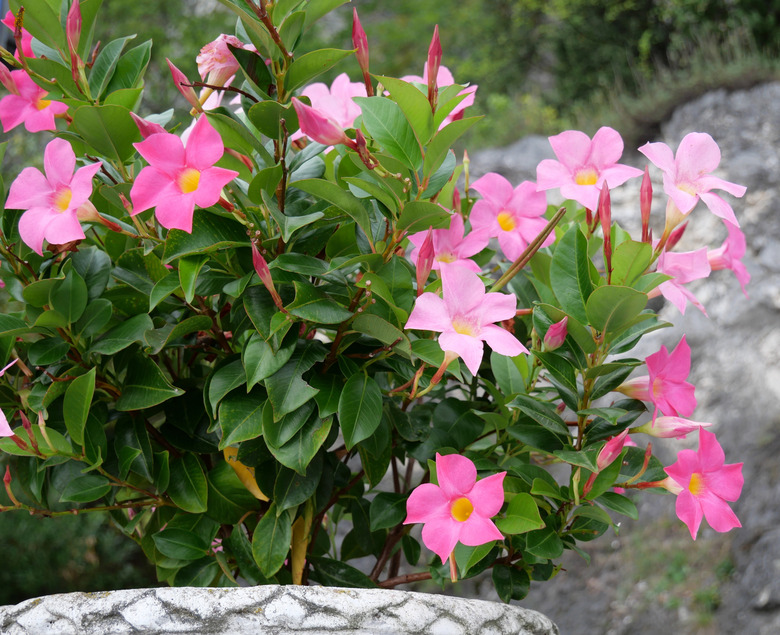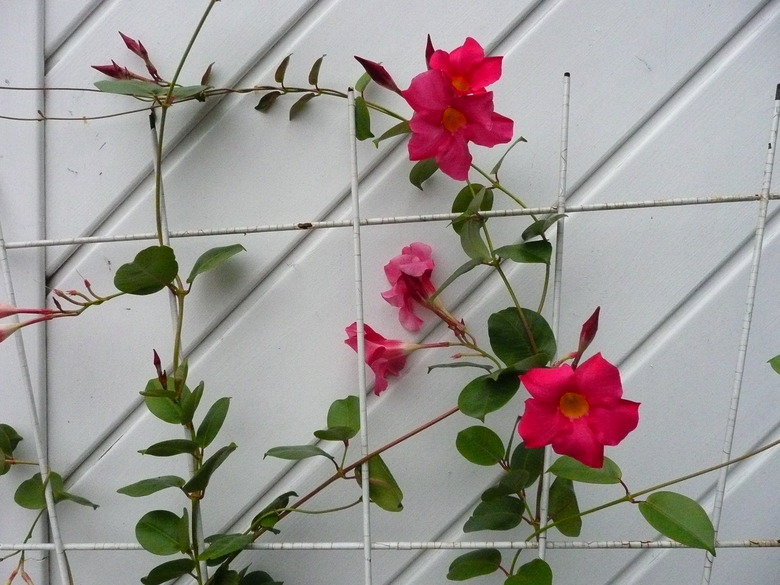How To Care For Mandevilla Sanderi
Since its need for warmth is imperative but its lush, tropical look is irresistible, many gardeners across the United States grow mandevilla in pots either as annuals or as houseplants if they live in an area colder than USDA plant hardiness zones 10 to 11. In Southern tropical climates, the mandevilla is a perennial.
Mandevilla is a genus comprising about 100 species with multiple hybrids as well. Mandevilla sanderi, previously known as both Dipladenia sanderi and Mandevilla splendens, has similar care requirements, as do all mandevilla vines. Also known as Brazilian jasmine, these vines will grow up to 15 feet long but might reach just 5 feet if grown in containers.
Mandevilla Environmental Requirements
- **Sunlight:** Outdoors, plant mandevilla in an area in partial shade. If you are maintaining them as houseplants, they need bright, indirect sunlight, so avoid uncurtained windows with southern exposure. These vines grow fast and lush when provided with daytime temperatures that exceed 70°F and nighttime temperatures of about 60 to 65°F.
- **Soil:** They prefer rich, well-drained soil with some humus.
- **Pinching and Support:** After planting, pinch back young seedlings to encourage bushiness and be sure to provide a climbing support, like a trellis or at least a stake.
- **Watering:** Maintain an even moisture, never allowing the soil to dry out but avoiding soggy conditions. If your area experiences very dry summers, be sure to irrigate regularly.
- **Fertilizer:** At the beginning of the growing season in spring, start fertilizing every two weeks with a high-phosphorus mix—for instance, 10-20-10. This will encourage blooms. Stop fertilizing two weeks before you expect colder temperatures so the plant doesn't have new, tender growth as the weather cools.
Mandevilla Pests and Diseases
Mandevilla is a hardy vine and is fairly resistant to problems, but it can be targeted by mealybugs, red spider mites, scales and whiteflies. Avoid using pesticides for these critters, as in most cases, the damage they inflict is minor. If you do have a serious infestation, treat your vine with horticultural oil, including neem oil.
The fungus anthracnose can infect the leaves, which might be evidenced by brownish spots on the leaves followed by a yellowing of the leaves, called chlorosis. Prevent this and other fungal diseases by avoiding overhead watering and cleaning up fallen or diseased leaves and discarding them in the trash.
Tip
Mealybugs, red spider mites, scales and whiteflies generally only inflict minor damage. So avoid using pesticides and consider using horticultural oil instead if the infestation is particularly bad.
Overwintering Mandevilla
Mandevilla must be brought indoors before nighttime temperatures dip below 45 or 50°F.
- **Check for Pests:** First, you want to make sure they are free of pests, as these will overwinter quite nicely along with the mandevilla. Inspect the leaves and their underside as well as the leaf axils. Look for both insects and eggs. You can usually remove them by hand by wiping the leaves with a damp paper towel, or you can spray any infestations with a strong blast from the hose.
- **Prune Extra Growth:** If the vine has a lot of growth, prune it to about 4 or 5 feet, as supporting a lot of foliage can tax the roots while the plant is inside. Place the pot in a sunny window or other lighted location, making sure that the temperature never falls below
50°F.
- **Slow Down Watering:** Because they will have less light and colder temperatures than they experience during the summer months, slow down watering so the plant can be allowed to experience the natural rest period it needs after a full growing season.
- **Prune Dead Stems and Clean Up the Plant:** In early spring before the plant would start to put on new growth, prune old, dead stems and clean up the plant a little. You can even do a heavy pruning if you want to control the size of your plant. Mandevilla blooms on new growth, which develops at the plant's base.

